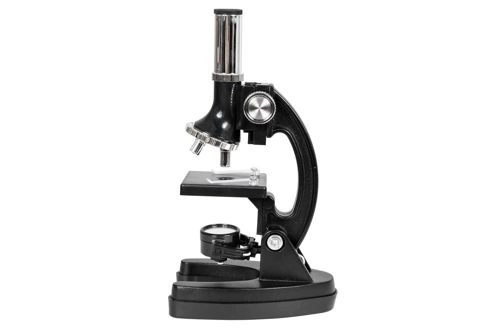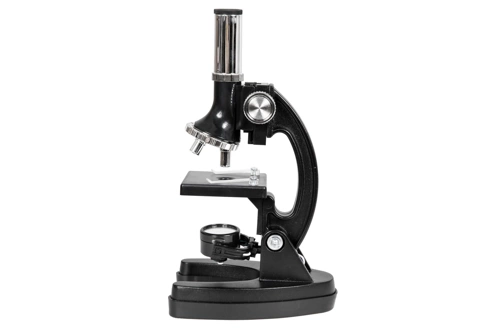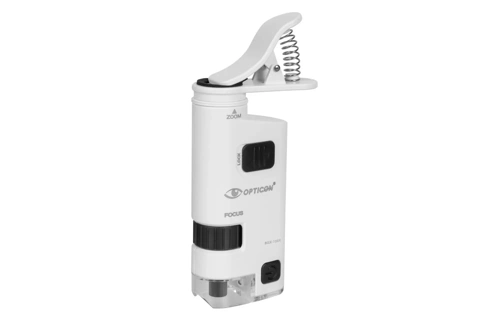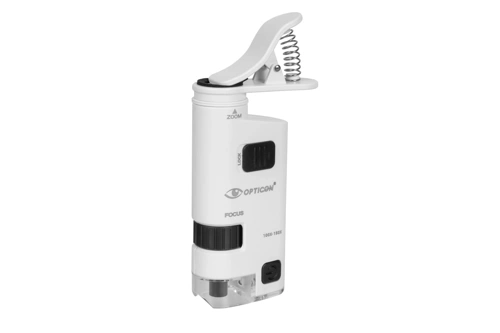Monocular, biological microscopes
An optical microscope equipped with a monocular is one of the two main types of microscopes, if we consider the number of eyepieces. It is simpler in construction than a double-eyepiece microscope, and is also sometimes easier to use. However, it is used in a slightly different way, as it allows observation of the specimens being studied with only one eye. Some users prefer this option, while others prefer to choose a binocular microscope because they find it more comfortable. Apart from the method of observation, both categories of microscopes are equally numerous in models with different parameters: more or less professional, which will work well for amateur and scientific use. Among the most popular monocular microscopes are microscopes of brands such as Opticon or Levenhuk.
Monocular microscope - characteristics
The optical system of a monocular (biological) microscope is equipped with an eyepiece and one or even four lenses - of different powers. These are its most important optical components, on which the range of magnification of a given model depends. Microscopes equipped with several lenses usually offer a broader range of magnification and allow to set the selected magnification value of a given object more precisely. They are placed on a special turret bowl - this is a head that rotates 360 degrees, which will allow you to easily select a microscope objective of a certain power. Such models of microscopes will work well even for professional microbiological research.
The optical system is the most important part of the microscope, but equally important is the mechanical system, which allows precise positioning of the observed object, as well as the lighting. The illumination of the microscope can be natural (obtained with the use of an adjustable mirror) or artificial, the source of which are LED lamps. The best option is to choose a microscope with a dual illumination system, which gives you the opportunity to set the preferred option at any given time. It is also worth remembering that proper setting of natural lighting requires not only more experience, but also a good light source outside the microscope. A microscope that is only equipped with the ability to use natural light is more difficult to use and will not work well in situations where you do not have access to strong external light.
What is a biological microscope used for?
A biological microscope can be used for a wide variety of observations, and it depends on its type, as well as its parameters. Simple models will work well in a home laboratory or even as a microscope for a child. They are easy to use and will allow you to make basic studies of the world around you. They can magnify the image tens, hundreds or even more than a thousand times. More professional models of single-eyepiece microscopes may offer a similar magnification range, but their lenses and eyepieces are usually of much better quality. It results in clearer and more detailed images of the objects under study. Professional microscopes use eyepieces with a wide field of view, as well as achromatic lenses. Such a biological microscope is used in laboratories, medical and veterinary offices. Its price is usually much higher.
Monocular microscope - parts and functions
Using a monocular microscope, it is possible to observe the microworld, the results of which we will then use in learning, at school or at work. This will be easier if we choose a microscope equipped with additional functions and facilities. A monocular head that rotates 360 degrees works well for group research - you can conveniently pass it to a colleague. A modern model of microscope also often allows you to connect it to a computer, monitor, camera or projector. This enables you to take pictures, record videos, and even live stream and display the image seen under the microscope. Such a feature comes very useful when giving lectures, making multimedia presentations, and preparing homework for school.
Thus, a monocular microscope can be as functional as a binocular microscope. It is equipped with all the optical and mechanical components that are standard for biological microscopes. It will work well for both amateur and professional use - if you feel comfortable with observations using one eye.

- Brand: OPT
- eyepiece: 20x
- lenses: 15x, 30x, 60x
- range of zoom: 1200x, x300, x600
Microscope OPTICON Lab Starter

- Material: Polymer+Metal Magnification range: 300x, 600x i 1200x Eyepiece : 20x Objective lenses : 15x, 30x, 60x Natural light Artificial light Prepared slides Blank slides Laboratory toolkit 98 pieces!
Microscope OPTICON Lab Pro

- Zoom Range: 80 - 120x Material: Polymer Color: White Weight: 65 g Power Source: 3 x AAA LED single-layer lighting
Pocket Eye 80-120X Mini Microscope

- Zoom Range: 100 - 150x Material: Polymer Color: White Weight: 65 g Power Source: 3 x AAA LED single-layer lighting
Pocket Eye 100-150X Mini Microscope

- Zoom Range: 120 - 190x Material: Polymer Color: White Weight: 65 g Power Source: 3 x AAA LED single-layer lighting


